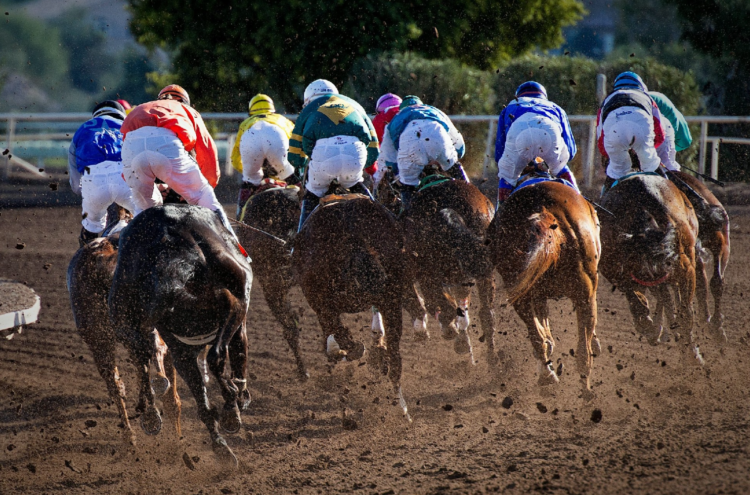It should also be noted that horse racing has evolved a lot since the time of our grandparents, the growth of the betting market and changes in the approaches to the analysis of the events determining the changes in the dynamics of the sport over the last decades. Thus, although the task of choosing the winners is always the same, the emergence of live horse racing and Internet betting has fundamentally changed the situation. This knowledge piece aims at reviewing the history of horse racing, explaining the present state, and providing suggestions for the future races.
The Impact of Betting and the Internet on Horse Racing
The betting industry has recently gone through numerous changes and the types of bets have increased greatly. The advancement of the internet and power of modern technology has brought horse racing news and data to a common society making it an international activity faster than it used to be a regional sport.
Varieties of Horse Racing Bets Available
In earlier days, betting by horse racing was only done by the bookmaker, the race tracks, and the customers only. While other forms of betting are practiced in casinos such as games of chance where either the casino or the bettor wins, the racetracks employ the parimutuel betting system. All the bets are collected and accumulated into a large pool then the house claims a portion of the money and the rest is divided among those who bet on the right horse. This right guarantees the house a certain percentage of its dues independent of the race result.
The parimutuel system of wagering remains in use even for all horse racing betting while the total of the available choices for wagering has dramatically risen in the course decades. Originally, there were only three types of bets: first, second, and third. A win bet deployed the identification of the horse that finished the race first, a place bet could be received if the horse was the winner or the second one and the minimum payoff show bet anticipated the identification of the horse that was record third.
How Have Exotic Wagers Changed Sports Betting?
The first types of exotic wagers which are available were the daily double and the exacta. The daily double is a bet that is related to two races and offered usually for the first two races of the day, the bettor must select the winners of both consecutive races. Exotic bets have become popular to the fans finding value in getting paid more than the standard $5, $10 or $20 as offered by win bets. In horizontal wagers, which is another type of exotic bet, it consists of choosing winners of two or more successive races in much the same way as in parlay stakes.
For example, a selection of three consecutive winners is a Pick 3, four consecutive successful choices is a Pick 4 and so on, until the most demanding of them all, the Pick 6. Horizontal bets such as the exacta entail selecting the first and second place finishers. More complex types are trifecta, that is selection of top three horses in that order, the superfecta in which you have to select the first four horses in exact order. Among the aspects that must be met is the level of difficulty and chance of winning part of the bettors like their games to pay out often and less amount while others are more interested in high value and less frequent payout.
Horse Racing in the Digital Era
Previous forms of horse betting were based on pure guesswork of choosing the winner of a particular race with little or no information. Nowadays there are many possibilities to bet and handicappers get full access to the horse racing news and analysis. In the same way that every other sport has undergone a revolution in data and strategy, spear headed by people like Bill James in baseball or Sam Hinkie in basketball; horse racing has also experienced revolution in data. Although traditional past performances are informative, they bear too much data which may prove rather overwhelming. Handicappers need to filter out the important stuff out of the clutter.
For instance, the new Formulator in The Daily Racing Form enables users to filter data pertinent to their favorite parameters, use Equibase’s Stats Lens to analyze race likelihood with an inclination toward factors and adopt True Odds permitting the same. Research outlines trainer
information available online and finds that Jim Mazur’s Progressive Handicapping guides provide some of the best information available. Thus, the task is to learn how to analyze and use the considerable amount of information available to a handicapper in the age of Information
and communication technology.
The Future of Horse Racing Betting: Exchange Wagering
Nonetheless, the parimutuel system should be noted as a strength, yet the future of horse racing betting is in exchange wagering. While widely accepted in Europe it is allowed in limited regions in the US, exchange wagering is a combination of prop bets, friendly side wagers and horse racing betting. It enables two users to organize a bet with the terms of the bet set in advance and the betting company collecting a small portion of the bet amount. For example, if one person thinks that the favorite will disappoint and come in position 4 and below while
another offers 4/1 on $10 bet, they can go ahead and place that bet with the operator taking a cut, which is usually about 10%.
In exchange wagering, account holders are not only allowed to bet during the initial phase, that is before the commencement of the race, but can also wager when the race is still in progress through the live, in-game bets. Live betting has its advantages; odds change very quickly; if you see that the horse has begun the race badly but believe that it will soon turn better you put your bet at better odds than before the race started. Likewise, if a longshot is running well, early wagers can be placed for a possible good price if you are quick at making the bet.






















